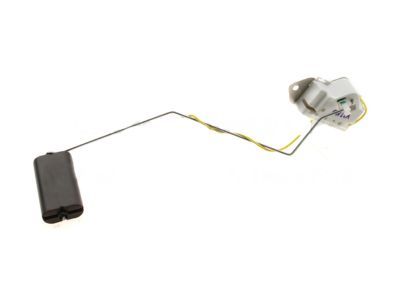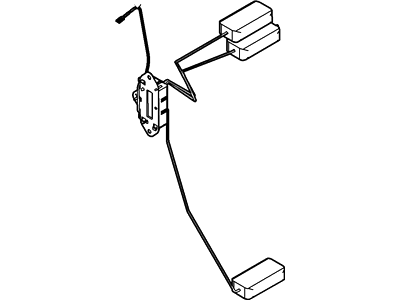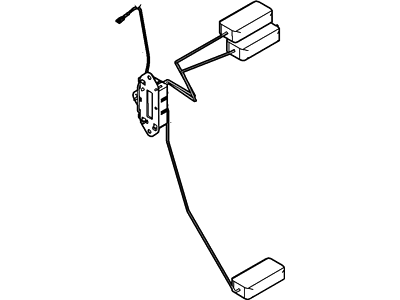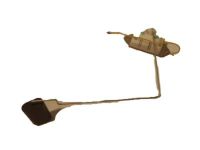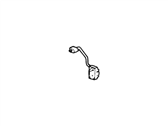

My Garage
My Account
Cart
Genuine Lincoln Town Car Fuel Level Sensor
Gas Gauge Sensor- Select Vehicle by Model
- Select Vehicle by VIN
Select Vehicle by Model
orMake
Model
Year
Select Vehicle by VIN
For the most accurate results, select vehicle by your VIN (Vehicle Identification Number).
6 Fuel Level Sensors found
Lincoln Town Car Fuel Tank Sender Assembly
Part Number: 6W1Z-9A299-A$70.84 MSRP: $117.09You Save: $46.25 (40%)Ships in 1-2 Business DaysLincoln Town Car Fuel Tank Sender Assembly
Part Number: 2W1Z-9275-AB$64.46 MSRP: $102.80You Save: $38.34 (38%)Ships in 1-3 Business Days
Lincoln Town Car Fuel Level Sensor
Lincoln Town Car; The Fuel Level Sensor plays an important role in these automobiles, and this is to help the driver know how much fuel is remaining in the fuel tank. These electronic gadgets are calibrated to tell fuel levels whether in cold or hot state thus giving the driver a fast and precise figure on the fuel status. The float actuating rod along with a resistor design a sensor that transmits messages to the fuel gauge to justify the necessity of refueling. If the problem is detected regarding fuel level sensor, it is advised to consult a professional for the proper fixing.
We provide a wide range of Lincoln Town Car Fuel Level Sensor at the best prices possible. If you need Lincoln Town Car Fuel Level Sensor, you can shop with confidence on our website. All our OEM parts come with a manufacturer's warranty and are delivered to your door step with a fast delivery service.
Lincoln Town Car Fuel Level Sensor Parts Questions & Experts Answers
- Q: How to check and replace the fuel level sending unit on Lincoln Town Car carbureted engine?A:To check and replace the fuel level sensor, first, raise and secure the vehicle on jackstands. For models with an analog gauge, disconnect the electrical connector for the fuel level sensor and turn on the ignition key to check the gauge operation. Use a test light to find the terminal with battery voltage and ground the terminal without voltage to test the gauge response. For models with a digital instrument cluster, perform a similar test using a voltmeter or test light and a 15-ohm resistor. Remove the resistor and use a 150-ohm resistor to check the gauge response. For a more accurate check, remove the sensor from the Fuel Tank and check its resistance manually operating the float arm. To replace the sensor, remove the fuel tank from the vehicle if necessary, and carefully remove the sensor, disconnect the electrical connector, and install the new unit using a new O-ring between the tank and the sensor cover.
- Q: How to check and replace the fuel level sending unit on Lincoln Town Car fuel-injected engine?A:To perform the fuel pressure test, you will need a fuel pressure gauge and adapter set. Before proceeding, relieve the fuel system pressure and lay a shop towel over any fuel connection to absorb residual fuel. Start the preliminary inspection by checking if the fuel system delivers the proper amount of fuel. Listen for a whirring sound at the fuel filler opening when turning the ignition key to the On position. If there's no sound, check the Fuel Pump fuse, relay, and circuit. Check for battery voltage to the fuel pump relay connector and power relay connector. If there's no voltage, inspect the fuses and wiring circuit. For the operating pressure check, attach the fuel pressure gauge to the test port and activate the fuel pump without starting the engine. Note the fuel pressure and start the engine to measure the pressure while idling. Detach the vacuum hose from the fuel pressure regulator to check for an immediate increase in pressure. If pressure is too high, inspect for obstructions or replace the fuel pressure regulator. If pressure is low, check the fuel filter and hoses, and if needed, replace the fuel pressure regulator or check the fuel pump. For the fuel pump output pressure check (dead-head pressure), use a fuel pressure gauge with a bleeder valve to relieve pressure after the test. Attach the gauge directly to the fuel feed line at the fuel tank and bridge the terminals on the Diagnostic Test connector to activate the fuel pump. Note the pressure reading and compare it after five minutes. If the hold pressure is less than specified, check the fuel line for leaks or replace the fuel pump.
Related Lincoln Town Car Parts
Browse by Year
2011 Fuel Level Sensor 2010 Fuel Level Sensor 2009 Fuel Level Sensor 2008 Fuel Level Sensor 2007 Fuel Level Sensor 2006 Fuel Level Sensor 2005 Fuel Level Sensor 2004 Fuel Level Sensor 1997 Fuel Level Sensor 1996 Fuel Level Sensor 1995 Fuel Level Sensor 1994 Fuel Level Sensor 1993 Fuel Level Sensor 1992 Fuel Level Sensor 1991 Fuel Level Sensor 1990 Fuel Level Sensor 1987 Fuel Level Sensor 1986 Fuel Level Sensor 1985 Fuel Level Sensor 1984 Fuel Level Sensor 1983 Fuel Level Sensor 1982 Fuel Level Sensor
